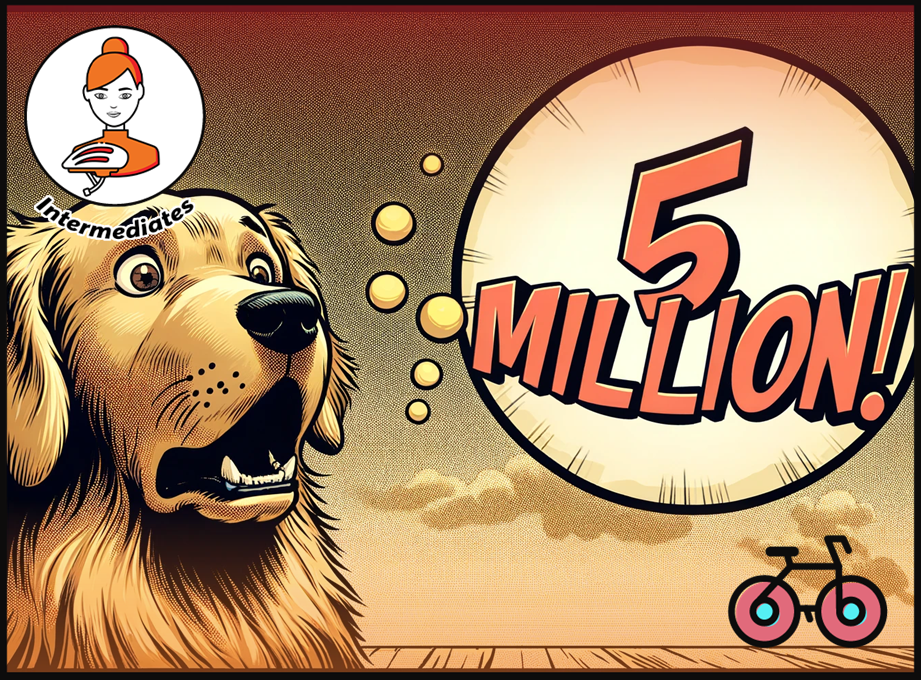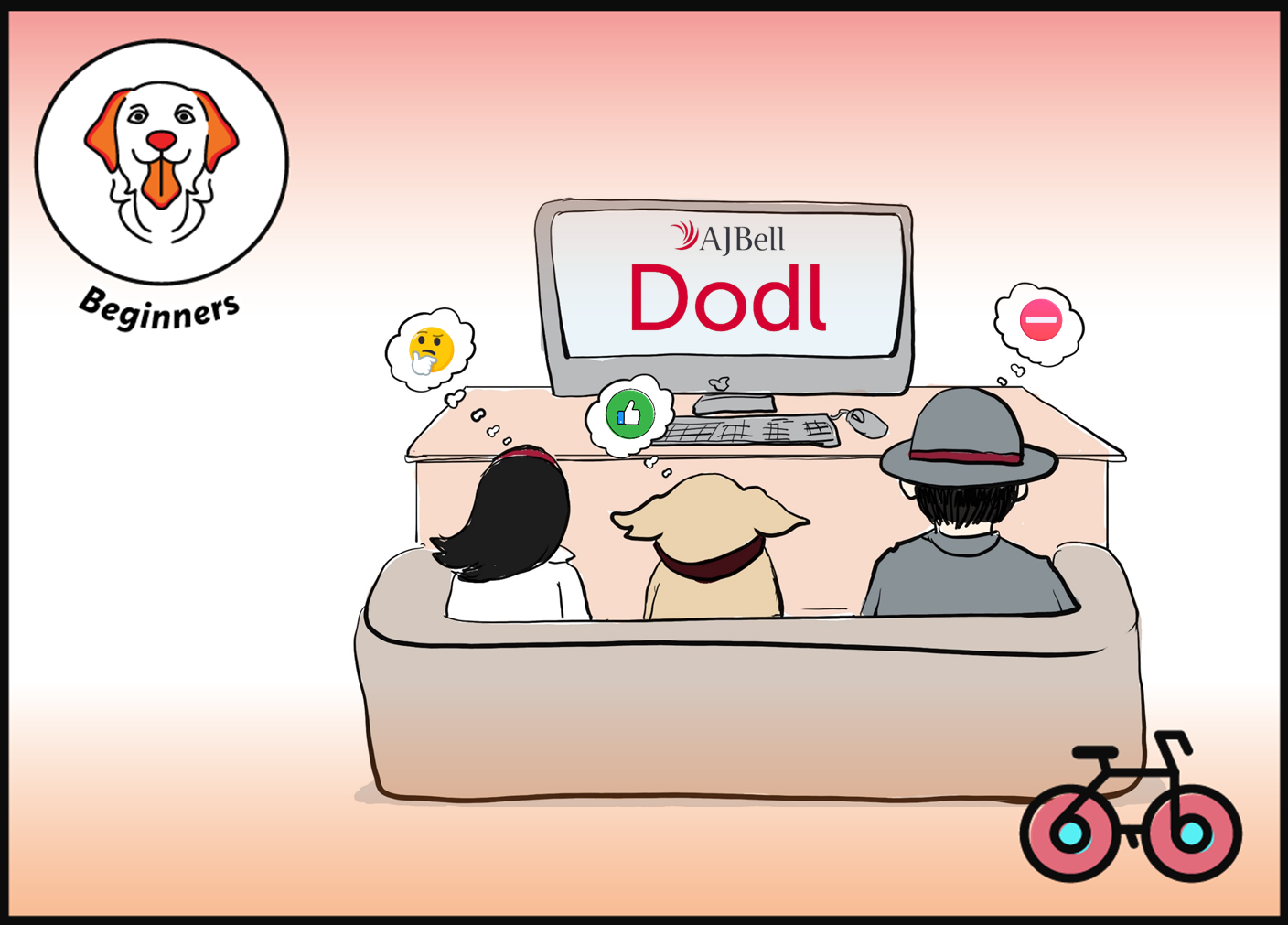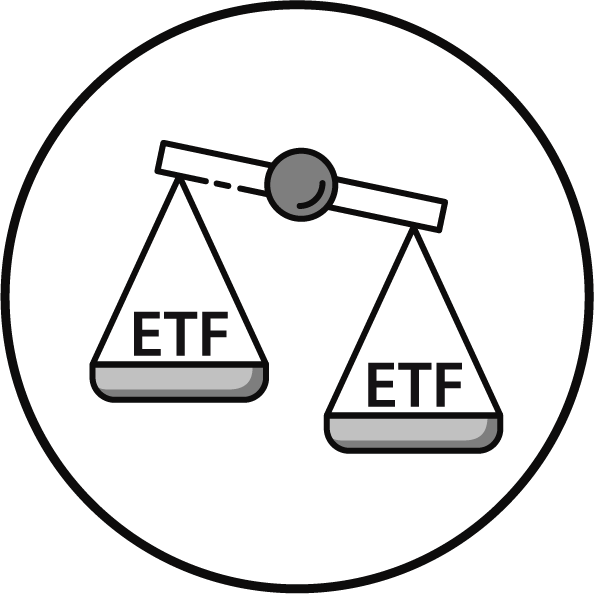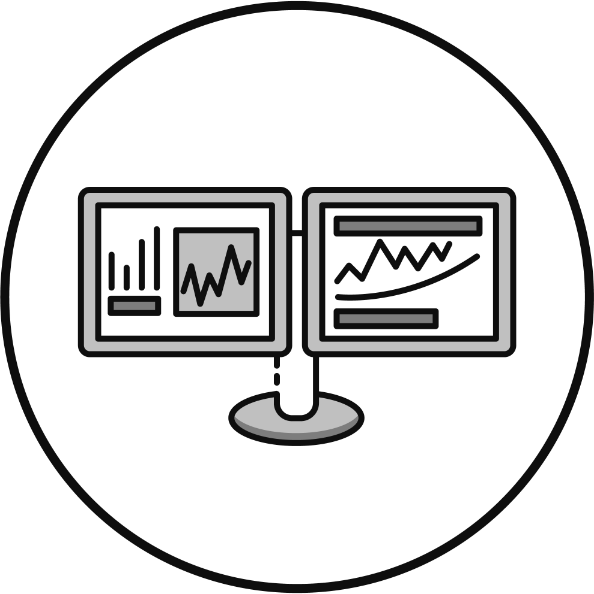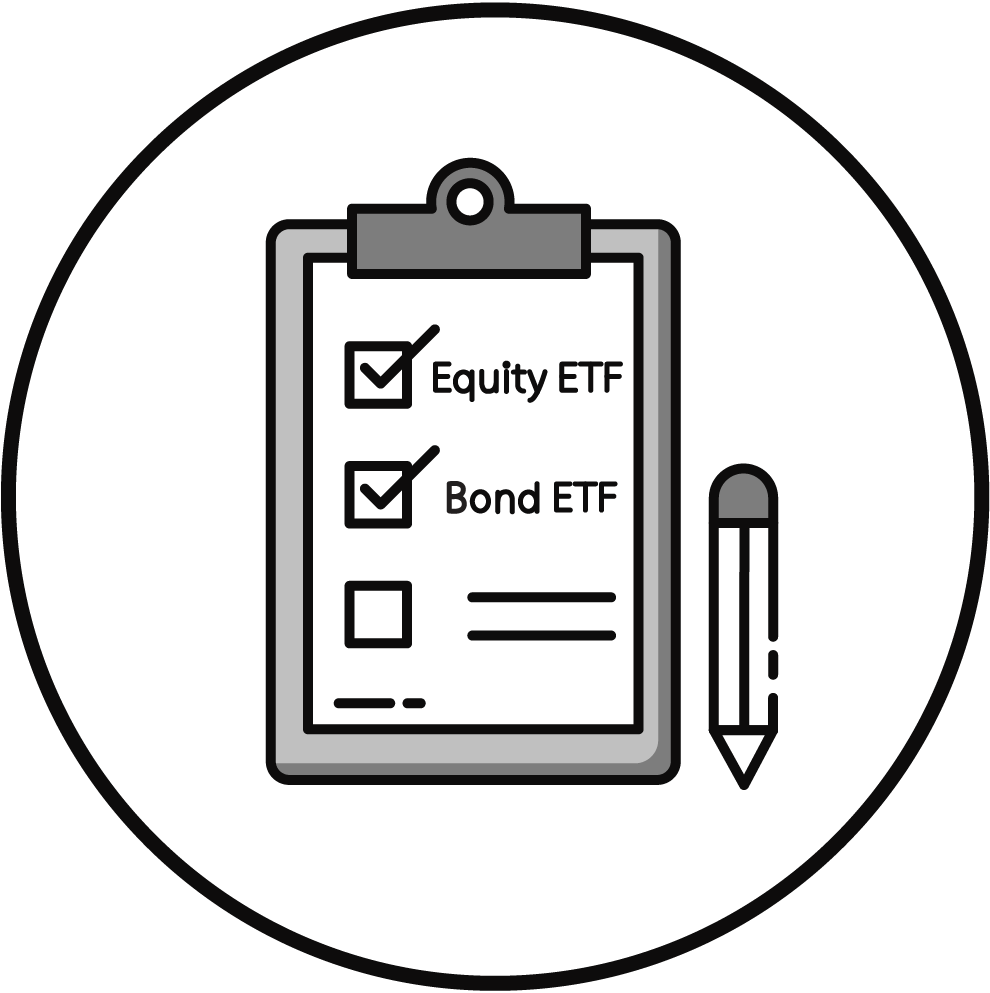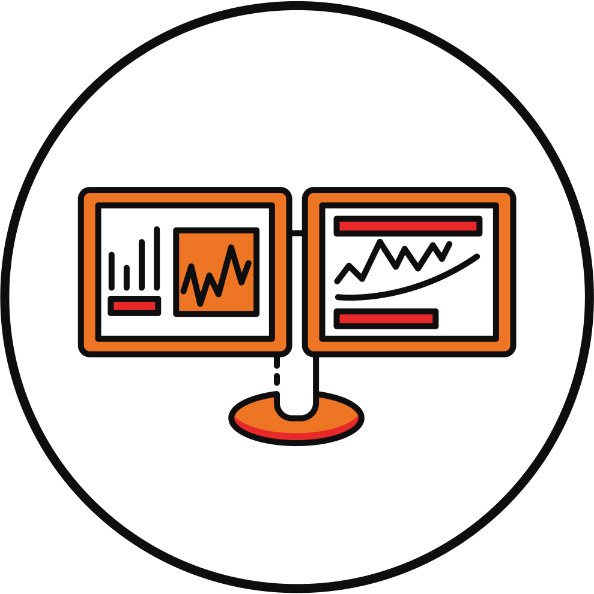Financial JARGON EXPLAINED BY KATHRIN
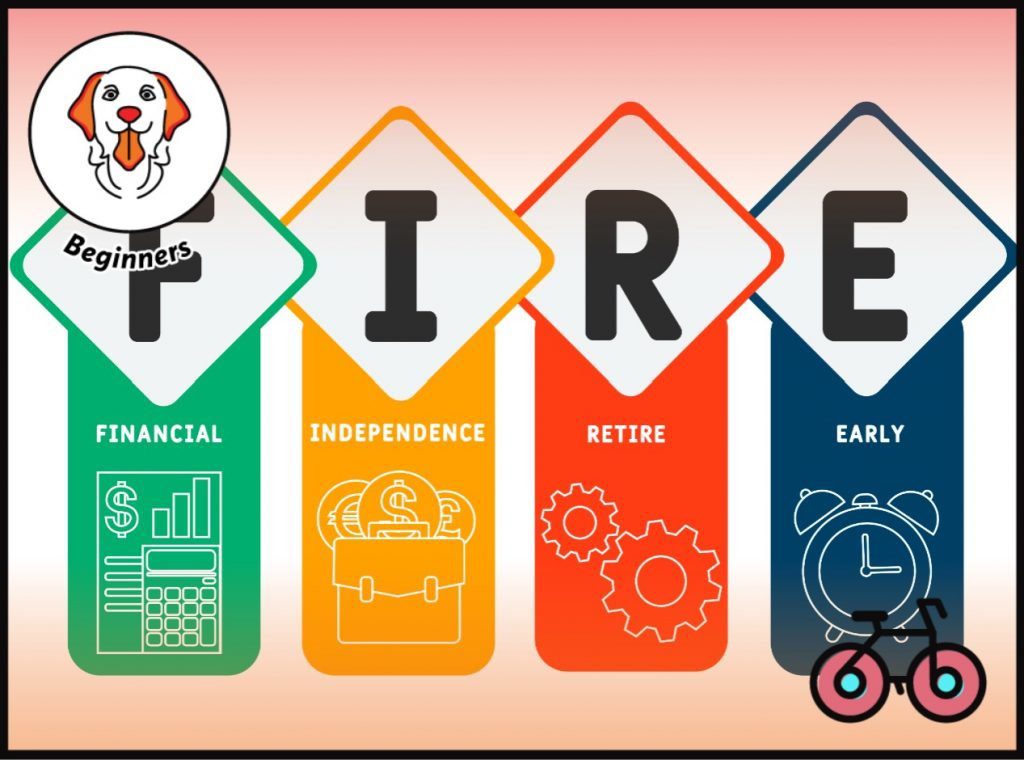
Imagine someone telling you that wandering around Tokyo with the underground is easy…while omitting ‘if you speak Japanese’. Here is the same. Sure, opening an account with an online broker/robo-advisor and setting up a monthly transfer is not that complicated; the hard part is before those steps. It is learning the language.
- Nicola Protasoni
Personal finance can be confusing, especially if you’re new to it.
ETFs, Passive Investing, Bear Market or FIRE – what do all the terms financial bloggers use actually mean?
As Nicola puts it the hard part in investing is not opening an account with your broker. It is learning the language.
When I first developed an interest in managing my own money, it took me several years to learn about the various concepts and strategies.
Now, I like to think I have a working knowledge of the most important terms.
The below terms are divided into two sections:
I have also included my personal take on the term I explain (in italic).
Hopefully, the following explanations will help you pick up some of this information and follow along other blog posts more easily.
The Most Important Investing Terms
Risk Tolerance
When you start managing your money, one of the first things you need to figure out is your risk tolerance. This is the amount of risk you are willing to take on when investing. As a general rule, the more an investment fluctuates, the larger its return, so investors who want their portfolio to grow quickly need to take on a fair amount of risk.
However, those who are nervous about losing money or retired people who need to live on the return of their investments are usually more cautious.
For instance, I am in my late 20s and have completed a university-level education. Because I am likely to earn a good wage in the future and potentially have many decades of work left, I am able to take on a lot of risk. That’s why I’ve chosen to invest 80-90% of my money in stocks, which are more likely to fluctuate in value and only 10-20% in more stable assets.
If there is a stock market crash and my portfolio loses 50% of its value, I still have time to build it back up. As I grow older and my net worth increases, I will likely reduce my exposure to risky investments.
ETFs and Mutual Funds
Owning a single stock or bond can be risky, so most people purchase a basket of them. There are many providers who offer a ready-made mix of stocks. For instance, you can buy a fund that includes the largest companies in the USA or all the most important tech companies. A traditional mutual fund is priced and traded once a day, but an ETF is a special kind of fund that can be traded throughout the day.
When I first started investing, I chose two funds: one that tracked technology companies and one that tracked smaller companies. Although these have done well, I am now investing in a broader fund that holds all the world’s biggest stocks.
ASSET CLASS
There are countless products you can invest in. They are divided into groups, called asset classes. The most popular ones, which I currently invest in, are stocks and bonds. There are others, such as cryptocurrencies and commodities. Each class has its advantages and disadvantages. Depending on your risk tolerance, you will choose to allocate a certain percentage of your money to each.
Diversification
It’s very risky to own only a few stocks because you’ll lose a lot of money if one of the companies fails. For this reason, most people own funds, which invest in hundreds or thousands of companies. This process of dividing your money to make sure you don’t lose it all at once is called diversification.
Personally, I invest most of my money in the Vanguard FTSE Global All Cap Index Fund, which includes several thousand companies around the world. If a few of the stocks fail, this loss will be made up by the gains of the others. Additionally, I hold some bonds and some cash to further diversify. Other people also include commodities like gold or oil and cryptocurrencies.
Stocks
Also known as Equities. When you buy stocks or equities, you receive a share in a company. For instance, people buy shares in Amazon, Google, or Tesla. In doing so, they become owners of a tiny slice of the business. Therefore, they make money when the company does well and lose money when it fails to make a profit. You can buy and sell shares in all the biggest companies in the world.
I currently have around 80% of my money in stocks because they are one of the asset classes with the highest expected return. But I do it through ETFs since the most diversified ETFs usually recover potential losses over time while single name Stocks can lose money and never recover.
Bonds
Also Known as Fixed Income. When you invest in bonds, you are lending your money to a government or institution, and they will pay you interest on it. Your return is quite predictable because the interest is usually fixed, and large companies are usually unlikely to collapse and fail to pay you. However, you will earn less money with bonds than in the stock market. They provide stability to your portfolio.
I currently have around 10% of my money in bonds, but this percentage will increase as I get closer to retirement. Typically, people who live off their investments or those with lower earning capability choose to hold more bonds than stocks because they are less risky. Bonds can also serve as a cushion that can be sold to buy Stocks during a market crash when Stocks become cheap (see Rebalancing).
REBALANCING
Over time, your asset allocation changes because your investments don’t all perform equally well. For example, if your stocks increase by 10% but your bonds only by 5% in a given year, you’ll end up with a higher percentage of stocks by December. Because equities are riskier than fixed-income investments, this would increase your portfolio’s overall risk level. If you don’t want to take on the extra risk, you must sell some of the stocks and buy more bonds to restore the ratio you had before. Most investors go through this process, called rebalancing, once a year.
I personally don’t sell anything because I am constantly contributing to my portfolio. If I notice that I have too little of one asset, I simply buy more of it to restore the balance. This is a good strategy for anyone who is at the beginning or in the middle of their journey. Once I’m no longer contributing so much, I’ll have to rebalance annually.
Compounding
When you make money through investing, progress is slow at first, but it picks up, and you start making more and more money over time. This is because of a phenomenon called compounding. Let’s look at an example. If you invest $1,000 at a return of 10%, you will have $1,100 after one year. In Year 2, you will earn 10% on the whole $1,100, so you will end up with $1,210. Because you earn money on your initial investment and your return, your net worth will grow more rapidly each year. By Year 5, you will have $1,610, and by Year 30, you will have almost $17,500, all from the initial $1,000. This is why the money you invest early in life makes such a massive difference to your wealth later on.
For instance, although I’m not even close to owning a million pounds now, I would be a millionaire in my 60s even if I never invested another pound. At a return of 7% over 35 years, I would expect my money to increase by a factor of 10 just from compounding alone.
Annualized Return
From each asset class, you can expect a certain return each year. For example, stocks tend to perform at 7-8% each year. Of course, this isn’t a guarantee, and the return varies by year. You might gain 20% one year and lose 15% the next, but over several decades, you can expect the return to come close to this average.
Dividends
When you buy stocks, whether directly or in an index fund, there are two ways they make you money. Firstly, the value of the company might increase, which means that the share itself is worth more. Secondly, the company might choose to share their profits with their investors. In this case, you receive some money for each share you own. This payment is called a dividend. Depending on the company you own, you will be paid your dividend quarterly or annually.
One of the brokers I invest with publishes a “Dividend Diary” that allows me to track which dividends come in each month. This is an interesting tool because it shows me how much I’m being paid. However, I always reinvest my dividends instead of withdrawing them because this allows my portfolio to grow more quickly.
PASSIVE INVESTING
Passive investing is when you buy a fund for the long term and intend to buy and hold. Often the portfolio is tracking a diversified basket of stocks e.g. in proportion of the size of these stocks to the rest of the market. Evidence points to the fact that active investing often underperforms passive investing. It doesn’t involve a lot of buying and selling which is good because you can avoid expensive transaction fees.
I am a firm believer in passive investing. On top of the passive way my funds are managed by ETF providers (see Index Replication below), I am also passive in the way I manage my portfolio. I’ve been investing for almost four years without ever selling one of my funds. The lack of trading has saved me a lot of money.
Benchmark
Also known as Index. To measure the progress of the stock market, indices have been created. They track a certain sector or country and allow investors to compare their success to that of the overall market. For example, the S&P 500 contains the 500 biggest stocks in the US. The FTSE 100 contains the 100 most successful companies in the UK.
Many people choose to invest in “index trackers”, which follow the movements of such a benchmark. This is my preferred investment strategy because it’s simple, transparent and cost-efficient.
Index TRACKERS
Also known as index replication. A great way of investing in the stock market is by buying a fund that replicates one of the indices, such as the S&P 500. That way, you don’t have to worry about which companies will do well and which ones won’t, since you will earn the return of the whole stock market. Not all ETFs and Mutual Funds are Index Trackers. Many studies have shown that this strategy outperforms more than 90% of other investing methods.
When I bought my first funds, I didn’t know that investing in the entire global stock market is the recommended strategy, so I chose two indices: one tracking technology companies and one tracking smaller companies. While the former has performed well, the latter hasn’t made me as much money. Now, any new money I invest goes into a global index tracker because I believe that tracking the whole market is a better strategy for my long-term goals. In fact, I only buy funds I think will do well in the long term, based on historical evidence, not forecasts from Wall Street analysts.
Active Investing
Active investing is when you choose stocks or funds you think will outperform the index. As discussed, it isn’t often successful over the long term, and it is more expensive than indexing. For the average investor, this isn’t a great strategy.
However, I have a lot of friends who enjoy buying and selling stocks in the hopes that they will find the next Amazon or Google. While the amount of research involved doesn’t appeal to me personally, it can be fun to play around with stocks. Most personal finance experts agree that it’s okay to manage around 5% of your portfolio actively.
Dollar-Cost Averaging
Many people invest a part of their salary. For instance, you might have £500 leftover at the end of each month and put it in the stock market. But at some point in your life, you’re likely to receive a lump sum. This could be an inheritance, a bonus, or another type of windfall. You can invest this all at once, but this puts you at risk. If the market drops by 10% or more right after you invest, you’ll have lost a lot of your money. For this reason, some prefer to drip-feed their money into the market. If you received £12,000, you might choose to split it up into ten chunks of £1,000 and invest them each month for a year. Not every expert agrees that dollar-cost averaging is a good strategy because the stock market tends to go up over time, so on average, you make less money the longer you delay investing. Despite this, most people prefer splitting up large amounts into chunks.
For the past year, I have been helping my mother, who has never invested without an advisor before, dollar cost average some of her money into an investment account. She is much more comfortable buying small amounts at a time and enjoys watching her portfolio grow every month.
ETF Provider
Also known as Asset Manager. Are the firms that manage your ETFs. The two largest ones are BlackRock and Vanguard.
Vanguard
One of the most respected investment firms is the American company Vanguard. Because Vanguard is owned by the investors themselves (you!) and not by a family or another company, their Funds might be slightly cheaper than other options. Over the past decade, BlackRock and a couple of other firms were able to match the costs. So this is less of a differentiating factor nowadays. More importantly, this setup allows for fewer conflicts of interest. Vanguard only reports to the ETF/Mutual Fund Investors. This is usually not the case for other ETF Providers that are owned privately or listed on a Stock Exchange. In recent years, Vanguard has expanded to many countries such as the UK.
I have taken advantage of this and started investing in their Vanguard FTSE Global All Cap Index Fund, which allows me to track the stock market at a very low cost.
BlackRock
The biggest investment management company in the world is BlackRock. They also offer a host of cheap funds that are worth considering when investing for the long term. Their ETFs are known as iShares.
Expense Ratio
It may not sound intuitive but one of the most important determinants of a fund’s success is how expensive your chosen fund is. The more you pay the asset manager, the less money you keep for yourself. Although paying 1% of your money to a manager per year might sound like a small amount, it adds up over the years. For best success, most personal finance bloggers advise keeping your annual expenses below 0.5% annually.
Personally, I’ve chosen funds that cost between 0.15% and 0.30% per year. That way, I’m below the recommended figure even when you add in the 0.15% broker fee that one of my accounts charges. In the long run, choosing these low-cost options will save me thousands of pounds in fees.
StockBroker
When you’ve chosen which stock, bond, or fund to invest in, you need to use a “middle man” who allows you to purchase these investments. In most countries, there are various options. While some of these brokers allow you to do your own investing, others pair you up with an advisor who manages your money for you. Most people should avoid having their assets managed because it can get very expensive. For example, in the UK, investors are lucky to have some great options when it comes to brokers.
I have chosen two: one which allows me to invest in a tax-free Individual Savings Account and another that provides me with a self-invested pension. Both have very low fees, so I can easily keep my total annual expenses under 0.5%.
ROBO ADVISOR
TAX WRAPPER
If you invest through a regular account, you will pay taxes on your gains. But most countries have accounts that allow you to invest a certain amount of money without paying tax on it.
For example, I live in the UK, so I can put £20,000 in an Individual Savings Account every year. Any gains on this money will never be taxed. If I have a surplus, I can invest it in a pension. I don’t have to pay tax on my pension contributions now, but some of them may be taxable when I withdraw during retirement. Before starting to invest, figure out what tax wrappers exist in your country. Over the long run, this could save you thousands.
LIQUIDITY
When you choose where to invest your money, it’s important to consider how quickly you will be able to pull out your money when you need it. With large investments such as index funds or bonds, this usually isn’t a problem, and your money will be returned to you soon after you sell the asset. But if you go for more niche investments, you should check how long this process might take.
For instance, I dabbled in peer-to-peer lending a few years ago. This is when you lend money to others, just like you do when you purchase a bond. But P2P is much less secure because the borrowers are people like you and me, not big companies. After the Covid crisis hit, I wanted to pull my money out, but the P2P company I used was in financial difficulties. It took them over 6 months to release my cash. This is an example of an illiquid investment. Real Estate is another example. Some Mutual Funds froze withdrawals for months.
BULL MARKET
When the value of stocks is rising and people are gaining money when investing, we are in a “bull market”. The ‘Bulls’ are also investors that are optimistic. The names come from the way in which the animal attacks its victim, providing a metaphor for market behaviour. Bulls are characteristically charging up with their horns and bears swiping down with their claws. We have been enjoying a long bull market for the past decade and a half, so it has been easy for investors like me to get started and see the immediate benefits of putting money in stocks.
While I enjoy seeing my net worth increase each month, I know that both bull and bear markets are normal and nothing to be concerned about.
BEAR MARKET
When the value of stocks is falling and people are losing money, we are in what is called a “bear market”. Some active investors known as ‘Bears’ can sometimes make money from betting against the Stocks Market. The most bizarre sceptics you find on Twitter are called ‘permabears’. These are the doomsayers permanently pessimistic about the outlook for Stocks. It goes against multidecade evidence that Stocks consistently generate wealth for investors. Some of them amass huge positions in Gold to profit from a total collapse of the economy or even our society. However, for wise young investors, Bear Markets can be a great opportunity to get started because stocks are cheaper.
It is hard to keep investing when you see the value of your money decrease. I was fortunate to experience a very minor bear market when I first started investing in late 2018. My money lost 10% of its value, but fortunately, it climbed back up relatively quickly. Because of this early experience, I was better equipped to handle the larger market drop in 2020.
ESG INVESTING
Also known as Socially Responsible Investing. The term ‘ESG’ stands for Environmental, Social, and Governance, and it is a strategy that includes non-financial decisions in the investment process. Many people, especially the younger generations, are concerned about the future and would like to avoid investing in companies that damage our planet or cause harm to other people. ESG funds take this into account and exclude certain stocks, for example, tobacco manufacturers and oil companies.
So far, I have invested in regular funds, but I think ESG products are a very good idea and I am planning to do more research on them.
From Bankeronwheels.com
Get Wise The Most Relevant Independent Weekly Insights For Individual Investors In Europe & the UK
Liked the quality of our guides? There is more. Every week we release new guides, tools and compile the best insights from all corners of the web related to investing, early retirement & lifestyle along with exclusive articles, and way more. Probably the best newsletter for Individual Investors in Europe and the UK. Try it. Feel free to unsubscribe at any time.
🎁 In the first email, you can download a FREE comprehensive 2-page checklist to construct & monitor your portfolio and clean up your personal finances.
The Most Important FINANCIAL INDEPENDENCE Terms
FIRE
The acronym “FIRE” stands for “Financial Independence, Retire Early”. You are financially independent when your investments create enough money for you to live on each year. At that point, work becomes optional, and you can choose to retire early, start a business, keep working at a job you love, or pursue voluntary activities.
For me, the main draw of this concept is the “financial independence” part. As a self-employed worker, I am responsible for earning enough money each month to pay all my bills each month. If I didn’t need to work for money, I could choose which projects to accept and have a more relaxed attitude towards work.
The 4% RULE
There is a simple rule that helps you determine when you’re financially independent (“FI”). You’ve reached FI when you can live off 4% of your invested assets each year. So, you need £500,000 if you want to spend £20,000 annually (500,000 x 0.04 = 20,000). Depending on where you live and how long you need your money to last, you might need more than this.
For instance, I am under 30 and lead a healthy lifestyle, so I am expected to live to 90. I will have a better chance of never running out of money if I only spend 3% of my assets every year.
SAVINGS RATE
Your savings rate is how much money you save as a proportion of your income, and it determines how quickly you will reach financial independence. If you save 50% of your money after taxes, you can expect to work for 17 years, and if you save 60%, you will only need to spend 12 years working before you can retire.
I have kept up a 55-60% savings rate in the last few years, but it fluctuates every month because my income is variable. During the pandemic, I earned a lot less money, but I also spent less, so my savings rate didn’t drop drastically. Since then, I have regained more work and am now able to invest over 60% of my income.
LIFESTYLE INFLATION
As you progress in your career, you might start to earn more money. After a raise, it’s tempting to buy more stuff instead of putting the extra cash into savings.
For instance, I moved to a better area of London last year and am now paying £115 more per month for my flat. As a result, my life has become more expensive. This means that I can save less each month but also that I have to increase the size of my retirement pot to cover the extra spending. Buying more things and upgrading your life is called lifestyle inflation. Many people in the financial independence community try to avoid it and keep their spending as constant as possible over time.
FU (“Fuck you”) Money
Financial independence is a huge goal that takes most people 10+ years to achieve. That’s why some people in the community have created milestones to make the path more interesting. The first step is called FU Money, and it is when you have enough money to survive without a job for 1-2 years. That way, you can stand up to your boss if they treat you badly without worrying about being let go.
COAST FI
Coast FI is another milestone to reach on your way to full financial independence.
This is the stage I am at currently. If I never contribute to my retirement pots again and work only to cover my living expenses, I will still have enough money at age 65 for a comfortable retirement. Having your retirement sorted before the age of 30 is extremely freeing, and for many people, Coast FI could be the end goal and the way to a better work-life balance.
Lean FI/Barista FI
Before you reach full financial independence, you will become lean FI or Barista FI. This is the point where you could cover your basic living expenses from your investment income and either live a very basic lifestyle or supplement this money with a part-time, low-income and low-stress job, for instance as a barista.
Currently, my own FI goal is Lean FI because I anticipate working in a part-time capacity for at least the next 10-15 years. I enjoy writing and teaching, so I don’t mind doing it 2-3 days a week for the foreseeable future, even after I am financially independent.
FAT FI
Working for money is so ingrained in our culture that it can be challenging for people to quit their jobs and live off their investments. It feels scary, which is why many people extend their working years in the hopes of achieving Fat FI, or, a cushioned, ‘luxury’ version of financial independence. People who are Fat FI have more than enough money to live on, and they can afford to spend a lot on leisure purchases.
Personally, I am not so interested in luxury goods, but the extra security Fat FI offers does appeal to me.
Good Luck and Keep’em* Rolling!
(* Wheels & Dividends)

Weekend Reading – BlackRock Launches New iBonds, Truth About €1M Broker Insurance & BOW is 4 years old!

The Truth About €1 Million Broker Guarantees

4 Things I Learned In 4 Years Of Running A Finance Blog

Dodl By AJ Bell Review – AJ Bell’s Younger Brother

Vanguard LifeStrategy Review – A Retriever In A Babushka Doll

Why Do Portfolio Managers Care About Factors? It’s Not What You Think.
HELP US
🙋 Wondering why finding honest Investing Guidance is so difficult? That’s because running an independent website like ours is very hard work. If You Found Value In Our Content And Wish To Support Our Mission To Help Others, Consider:
- 📞 setting up a coaching session
- ☕ Treating us to a coffee
- 🐶 Purchasing Our Official Merchandise
- ❤️ Exploring Other ways to support our growth, both financially and non-financially.
DISCLAIMER
All information found here, including any ideas, opinions, views, predictions expressed or implied herein, are for informational, entertainment or educational purposes only and do not constitute financial advice. Consider the appropriateness of the information having regard to your objectives, financial situation and needs, and seek professional advice where appropriate. Read our full terms and conditions.


